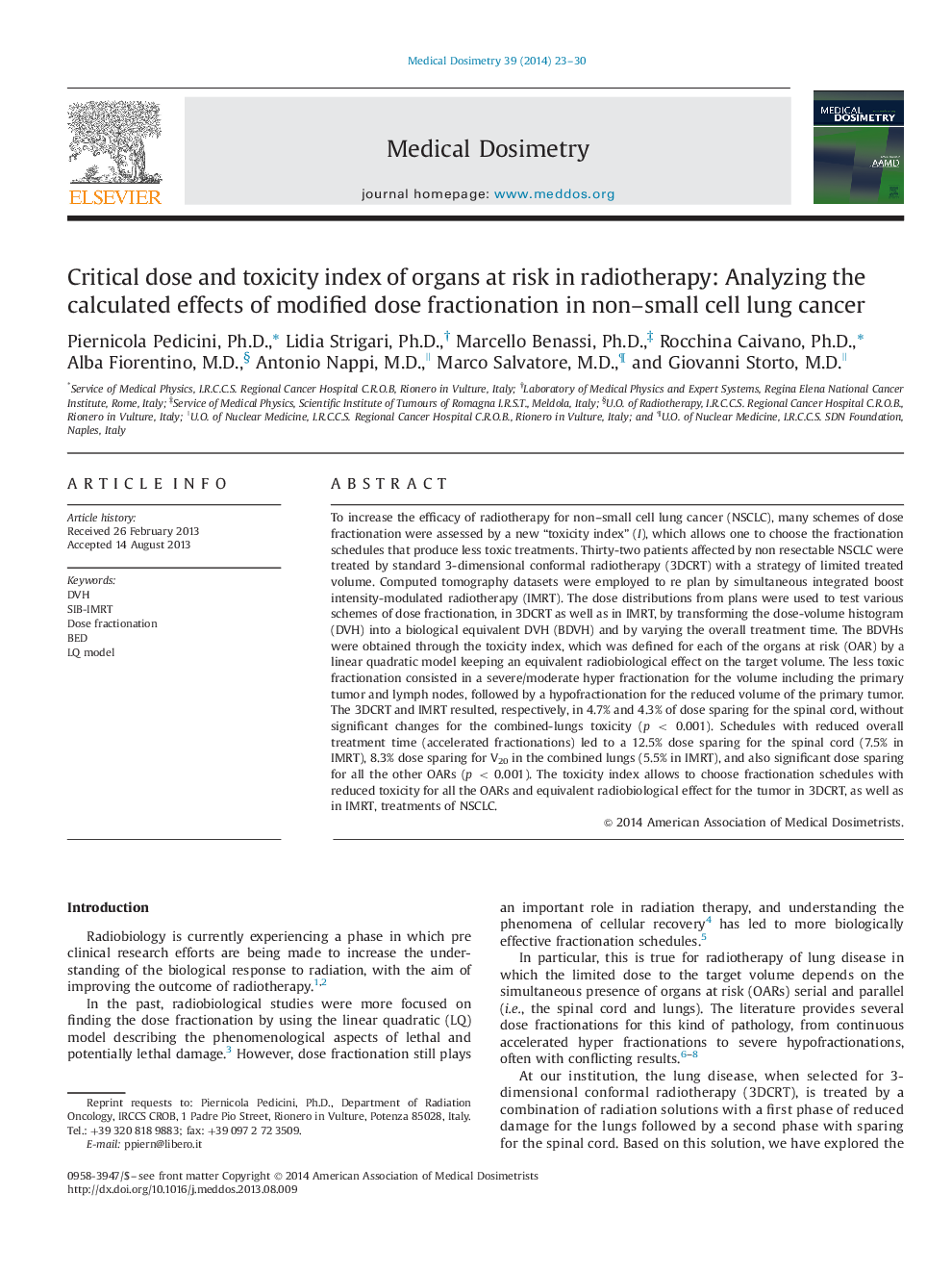| کد مقاله | کد نشریه | سال انتشار | مقاله انگلیسی | نسخه تمام متن |
|---|---|---|---|---|
| 1881949 | 1043185 | 2014 | 8 صفحه PDF | دانلود رایگان |
عنوان انگلیسی مقاله ISI
Critical dose and toxicity index of organs at risk in radiotherapy: Analyzing the calculated effects of modified dose fractionation in non-small cell lung cancer
ترجمه فارسی عنوان
شاخص دوز مهم و سمیت اندام های موجود در معرض خطر در پرتودرمانی: تجزیه و تحلیل اثرات محاسبه تقریبی دوز اصلاح شده در سرطان ریه های غیر سلولی
دانلود مقاله + سفارش ترجمه
دانلود مقاله ISI انگلیسی
رایگان برای ایرانیان
موضوعات مرتبط
مهندسی و علوم پایه
فیزیک و نجوم
تشعشع
چکیده انگلیسی
To increase the efficacy of radiotherapy for non-small cell lung cancer (NSCLC), many schemes of dose fractionation were assessed by a new “toxicity index” (I), which allows one to choose the fractionation schedules that produce less toxic treatments. Thirty-two patients affected by non resectable NSCLC were treated by standard 3-dimensional conformal radiotherapy (3DCRT) with a strategy of limited treated volume. Computed tomography datasets were employed to re plan by simultaneous integrated boost intensity-modulated radiotherapy (IMRT). The dose distributions from plans were used to test various schemes of dose fractionation, in 3DCRT as well as in IMRT, by transforming the dose-volume histogram (DVH) into a biological equivalent DVH (BDVH) and by varying the overall treatment time. The BDVHs were obtained through the toxicity index, which was defined for each of the organs at risk (OAR) by a linear quadratic model keeping an equivalent radiobiological effect on the target volume. The less toxic fractionation consisted in a severe/moderate hyper fractionation for the volume including the primary tumor and lymph nodes, followed by a hypofractionation for the reduced volume of the primary tumor. The 3DCRT and IMRT resulted, respectively, in 4.7% and 4.3% of dose sparing for the spinal cord, without significant changes for the combined-lungs toxicity (p < 0.001). Schedules with reduced overall treatment time (accelerated fractionations) led to a 12.5% dose sparing for the spinal cord (7.5% in IMRT), 8.3% dose sparing for V20 in the combined lungs (5.5% in IMRT), and also significant dose sparing for all the other OARs (p < 0.001). The toxicity index allows to choose fractionation schedules with reduced toxicity for all the OARs and equivalent radiobiological effect for the tumor in 3DCRT, as well as in IMRT, treatments of NSCLC.
ناشر
Database: Elsevier - ScienceDirect (ساینس دایرکت)
Journal: Medical Dosimetry - Volume 39, Issue 1, Spring 2014, Pages 23-30
Journal: Medical Dosimetry - Volume 39, Issue 1, Spring 2014, Pages 23-30
نویسندگان
Piernicola Ph.D., Lidia Ph.D., Marcello Ph.D., Rocchina Ph.D., Alba M.D., Antonio M.D., Marco M.D., Giovanni M.D.,
